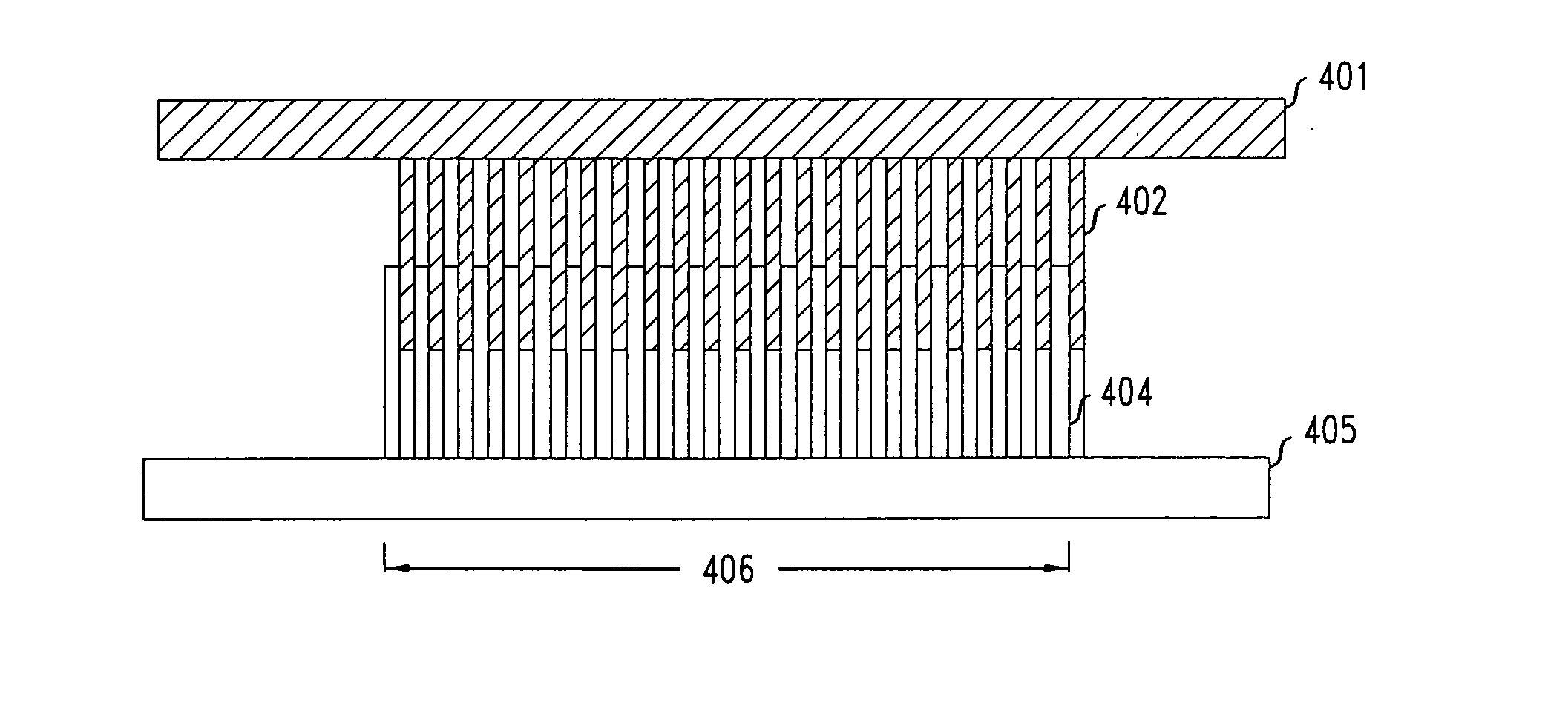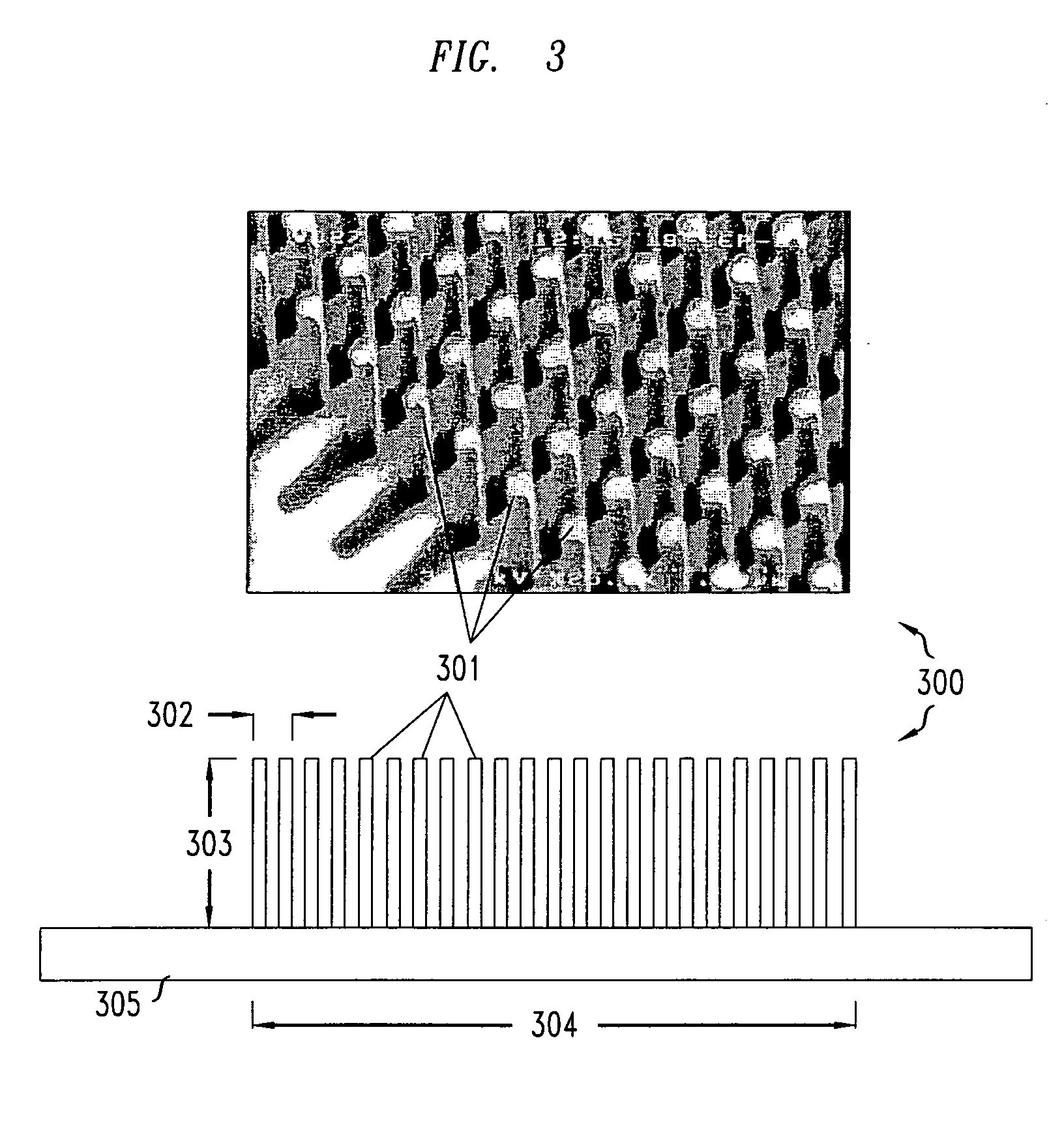High density nanostructured interconnection
a nano-structured, high-density technology, applied in the direction of vehicle sub-unit features, instrumentation, semiconductor/solid-state device details, etc., can solve the problems of increasing the risk of damage to the increasingly fragile components, damage to the mems package, damage to the mems components,
- Summary
- Abstract
- Description
- Claims
- Application Information
AI Technical Summary
Benefits of technology
Problems solved by technology
Method used
Image
Examples
Embodiment Construction
[0014]FIG. 3 shows one illustrative surface 300 in accordance with the principles of the present invention whereby a plurality of nanostructures 301, here nanoposts, are manufactured on a substrate 305, such as a silicon substrate. Cylindrical nanopost arrays, such as that shown in FIG. 3, have been produced with each nanopost having a diameter of less than 10 nm. One skilled in the art will recognize that there are many different illustrative arrangements (e.g., sizes, pitch and height) of nanoposts that can be produced using various methods and that such various diameter nanoposts can be fashioned with different degrees of regularity. An illustrative method of producing nanoposts, found in U.S. Pat. No. 6,185,961, titled “Nanopost arrays and process for making same,” issued Feb. 13, 2001 to Tonucci, et al, is hereby incorporated by reference herein in its entirety. Nanoposts have been manufactured by various methods, such as by using a template to form the posts, by various means ...
PUM
 Login to View More
Login to View More Abstract
Description
Claims
Application Information
 Login to View More
Login to View More - R&D
- Intellectual Property
- Life Sciences
- Materials
- Tech Scout
- Unparalleled Data Quality
- Higher Quality Content
- 60% Fewer Hallucinations
Browse by: Latest US Patents, China's latest patents, Technical Efficacy Thesaurus, Application Domain, Technology Topic, Popular Technical Reports.
© 2025 PatSnap. All rights reserved.Legal|Privacy policy|Modern Slavery Act Transparency Statement|Sitemap|About US| Contact US: help@patsnap.com



